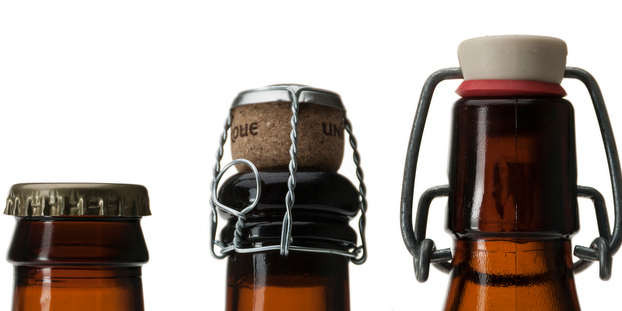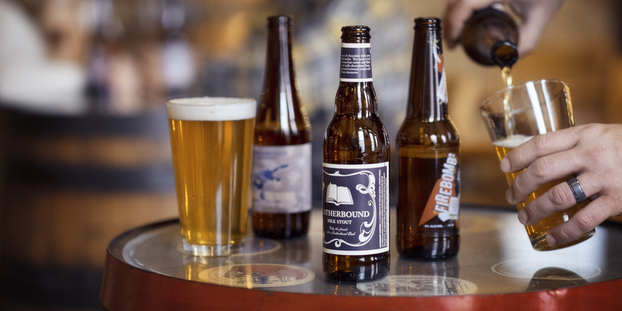
Material requirements planning (MRP) software is an integral tool for running and scaling up a successful craft brewery. Your production schedules and inventory are at stake, which means so are your beers and your reputation. No big deal! Luckily, MRP systems handle the complexities, but humans still need to select, set up and use these systems correctly.
But as much as we like humans, sometimes they mess up. We reached out to Adrian Belobradic, sales director for GP Analytics LLC, a top-notch cloud-based forecasting, production management and supply chain logistics solutions company, to learn how to avoid some of the more common MRP system mistakes.
These mistakes start right at the moment of purchase. A system designed for “craft breweries” could sound like a niche enough product, but obviously the needs of a 1,000-bbls-a-year brewery are drastically different from those of a 100,000-bbls-a-year brewery, and software decisions should be made accordingly. The most common MRP error is a smaller brewery selecting an overly complicated or sophisticated system that requires way too much training for what a smaller brewery needs.
Tip 1: Don’t buy something you do not need
Breweries of a certain size and complexity can save money on an MRP system by just having an organized person use typical accounting tools they already have (QuickBooks, Excel, etc.). Let’s be overly general and say this applies to breweries under 5,000 bbls. But as always, every brewery is its own sudsy snowflake. Depending on your points of distribution (distributors, cold storage, tasting rooms) you might need an MRP system sooner than others, but most breweries can get away with an accounting package like QuickBooks for quite awhile.
“The 6,000- to 15,000-bbls annual production mark is when breweries see the most growth. During this time, a brewery is likely opening new markets, re-organizing distribution agreements and getting more sales people into those markets,” Belobradic said.
This is prime time to begin looking for the right MRP solution, and when you make this purchase know that a basic system should be able to take you to or beyond 100,000 bbls. Some MRP solutions are simply not needed until you hit 80,000 bbls and 30-plus distributors. Then you can have a dedicated CPA to run what will be a super sophisticated system (or even 50,000 plus bbls if your size/shape is really complicated).
An MRP solution is meant to solve problems and save you time and money — don’t jump into a system that adds complication to your life. When choosing among MRP systems, ask the salesperson these questions to best winnow down the solutions that make sense for you:
- How does this find efficiencies at the brewery?
- How does this save me time?
- Does this save me money?
- Can this help with facility planning?
- How does your forecast model work, and how is it different than what I am doing now?
- How does this eliminate fragmented or unreliable wholesaler orders?
- Can this be scaled up to handle more distributors or a bigger brewery?
- Does the MRP system have benchmarking abilities for opening new markets?
- Do you have a valuation sheet showing average ROI or savings for breweries using your system?
- Would all of your brewery partners be willing to talk about your MRP solution?
Once you have a machine up and running, you will probably love it, and it will change your operations forever, for the better. But this is still a machine — this is not love. Did Ex Machina teach you nothing?
RELATED: Business software selection: ERP or best-of-breed?
Tip 2: Don’t let MRP systems replace team communication
Multiple MRP inputs can lead to cluttered information. “Just because brewing put X amount of 1/2 bbls in their end and sales decides to take out Y doesn’t mean there is always Z left there for the tasting room,” Belobradic said. “And in turn, operations can’t just look at the system and go ‘okay it’s all there, I’m buying raw materials now.”
MRP systems are for organizing information; they are not communication tools. Overcome this issue by, you know, just talking to each other. Too often breweries rely on technology when human-to-human communication is always going to be best. Yes, even with that jerk Brian in sales.
“Everyone logging into the system and every department using it should get together, as often as possible, and sure up information, clarify tasks and build plans based on the information they are all inputting and using,” Belobradic said.
RELATED: Craft a brewing business plan: Tips from a brewery in planning
Tip 3: Vet the forecasting tool of the MRP system
Many MRP systems will promise an accurate forecasting tool built in, but this is a tough tool to get right. Some people not familiar with forecasting beer might find huge benefits with any forecasting tool (which takes raw material inputs, depletions and sell day adjustments over last year). Just be sure to know how it works and how it will fit what you do. Start by asking your sales person what information is input (and by whom), how the information is weighted (in accordance of importance) and how the tool functions differently than how you already build your forecasts (based on historical sales and sell days).
The point of those questions is this: Don’t pay for something that won’t add a ton of value over how you are already forecasting.
“Some breweries might be better suited saving their money and forecasting their sales off of previous years, plus or minus sell days, or benchmarking off of similar breweries in their market or markets similar to theirs,” Belobradic said.
Bottom line, MRP software is awesome and can hugely improve how your brewery functions, just be sure to use it for what it was intended — maximizing its strengths, without having it complicate or interfere in ways you don’t need.





MRPEasy Ltd says
The beggist mistake what can be done now is paying hundreds of thousands to legacy ERP/MRP providers.
The same, or 10% less functionality, can be obtained for 10% of the money, what is used to pay 5 years ago.
How to avoid the most common MRP mistakes breweries make https://t.co/FxLbJDom8t
How to avoid the most common MRP mistakes breweries make https://t.co/Q4UvMVXITk via @craftbrewingbiz
#CraftBeer #CraftBrewing #Beer #BeerBiz How to avoid the most common MRP mistakes breweries make https://t.co/jIlBGGSYug
RT @CraftBrewingBiz: How to avoid the most common MRP mistakes breweries make https://t.co/pKBrKPEFoS great tips via @GP_Analytics